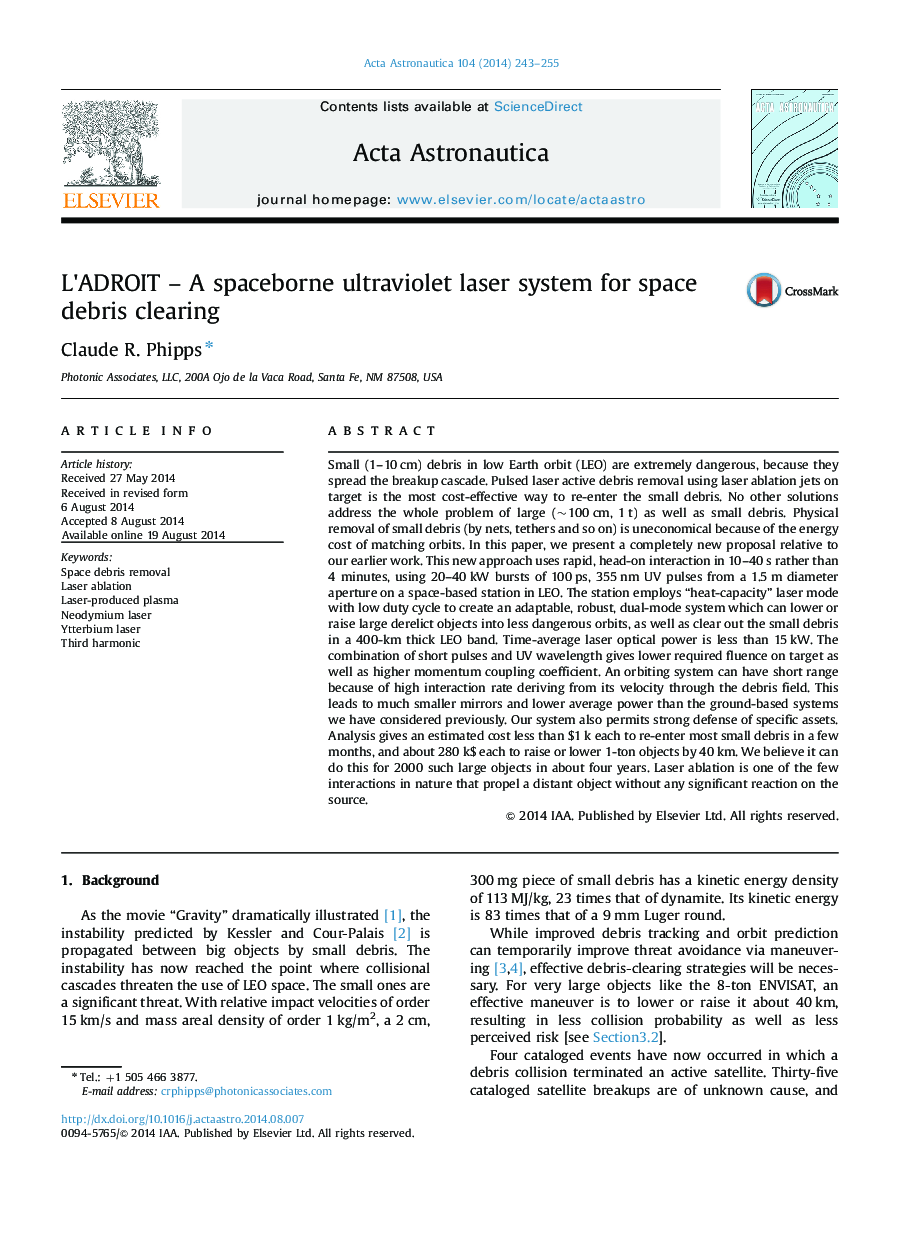| کد مقاله | کد نشریه | سال انتشار | مقاله انگلیسی | نسخه تمام متن |
|---|---|---|---|---|
| 10680788 | 1013330 | 2014 | 13 صفحه PDF | دانلود رایگان |
عنوان انگلیسی مقاله ISI
L׳ADROIT - A spaceborne ultraviolet laser system for space debris clearing
دانلود مقاله + سفارش ترجمه
دانلود مقاله ISI انگلیسی
رایگان برای ایرانیان
کلمات کلیدی
موضوعات مرتبط
مهندسی و علوم پایه
سایر رشته های مهندسی
مهندسی هوافضا
پیش نمایش صفحه اول مقاله

چکیده انگلیسی
Small (1-10Â cm) debris in low Earth orbit (LEO) are extremely dangerous, because they spread the breakup cascade. Pulsed laser active debris removal using laser ablation jets on target is the most cost-effective way to re-enter the small debris. No other solutions address the whole problem of large (~100Â cm, 1Â t) as well as small debris. Physical removal of small debris (by nets, tethers and so on) is uneconomical because of the energy cost of matching orbits. In this paper, we present a completely new proposal relative to our earlier work. This new approach uses rapid, head-on interaction in 10-40Â s rather than 4 minutes, using 20-40Â kW bursts of 100Â ps, 355Â nm UV pulses from a 1.5Â m diameter aperture on a space-based station in LEO. The station employs “heat-capacity” laser mode with low duty cycle to create an adaptable, robust, dual-mode system which can lower or raise large derelict objects into less dangerous orbits, as well as clear out the small debris in a 400-km thick LEO band. Time-average laser optical power is less than 15Â kW. The combination of short pulses and UV wavelength gives lower required fluence on target as well as higher momentum coupling coefficient. An orbiting system can have short range because of high interaction rate deriving from its velocity through the debris field. This leads to much smaller mirrors and lower average power than the ground-based systems we have considered previously. Our system also permits strong defense of specific assets. Analysis gives an estimated cost less than $1Â k each to re-enter most small debris in a few months, and about 280Â k$ each to raise or lower 1-ton objects by 40Â km. We believe it can do this for 2000 such large objects in about four years. Laser ablation is one of the few interactions in nature that propel a distant object without any significant reaction on the source.
ناشر
Database: Elsevier - ScienceDirect (ساینس دایرکت)
Journal: Acta Astronautica - Volume 104, Issue 1, November 2014, Pages 243-255
Journal: Acta Astronautica - Volume 104, Issue 1, November 2014, Pages 243-255
نویسندگان
Claude R. Phipps,